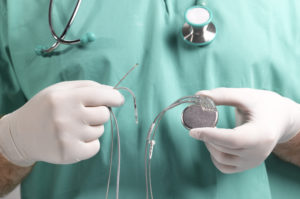Exactly One Year Later, CMS Reverses Course on Covering Innovative MedTech

In September 2020, the Centers for Medicare & Medicaid Services (CMS) proposed a new rule that would expedite Medicare coverage for medical technology approved through the Food & Drug Administration’s (FDA’s) “Breakthrough Devices Program.” CMS’s proposal – the Medicare Coverage of Innovative Technology, or MCIT, Pathway – was groundbreaking in that innovative medical technology would be afforded a new, expedited coverage avenue that would significantly reduce the time it takes for Medicare beneficiaries to gain access to and benefit from innovative technology. It published the final rule on January 14, 2021.
But, just one year later on September 15, 2021, CMS plans to rescind the MCIT pathway altogether. As a result, the medical technology industry, providers, and patients, which had looked favorably upon the agency’s MCIT proposal, will continue to face the uphill climb of traditional Medicare coverage for medical devices.
Medicare Coverage of Medical Technology
Prior to CMS’s proposal, FDA marketing authorization of a breakthrough device did not mean immediate access for Medicare beneficiaries. Instead, Medicare rules required even greater effort on the part of manufacturers and providers for Medicare to actually pay for the technology.
Under traditional Medicare coverage rules, even if the FDA granted a particular product marketing authorization, CMS separately determines if the device should be considered “reasonable and necessary” for patient diagnosis and treatment via a National Coverage Determination (NCD) from CMS or via a Local Coverage Determination (LCD), made by one or more Medicare Administrative Contractors, or MACs. This process, which includes evidence-based reviews, is lengthy and – in the case of an LCD – may even result in different standards in different geographies, based on the location of the MAC. And, as the medical technology industry has repeatedly emphasized, the result is that America’s seniors and others dependent upon Medicare coverage, would have to wait – in some cases for years – to access the most innovative technology.
MCIT Proposal – An Expedited Avenue to Coverage for Innovation
Under the original 2020 proposal’s MCIT coverage path, CMS would offer a four-year period after FDA marketing authorization for breakthrough status medical technology to be reimbursed by Medicare, thereby bypassing the NCD or LCD process. If the technology did not have an existing Medicare benefit category or was excluded from Medicare coverage by statute, MCIT would not be available. During the MCIT path’s four-year period, medical device makers would be encouraged (not required) to develop additional clinical evidence and to collect additional data. And at the end of the four years, the device would be subject to an NCD that either grants or denies Medicare coverage or offers MACs the discretion to conduct claim-by-claim adjudication or an LCD.
Put another way, the MCIT path would significantly abbreviate what has become a lengthy coverage process and would provide Medicare beneficiaries with quicker access to advanced, innovative technology.
In promulgating the MCIT coverage path, then-CMS Administrator Seema Verma emphasized its goal of expediting the delivery of advanced, innovative technology to Medicare beneficiaries, and diminishing administrative burdens on that hamper or slow this process. Verma noted, “Government processes have slowed beneficiaries’ access to innovative treatments. Despite being deemed safe and effective by the FDA, Medicare beneficiaries have not had predictable, immediate access to innovative breakthrough devices . . . [t]he MCIT rule will eliminate this lag time for both seniors and innovators.”
MCIT Proposal’s “Reasonable and Necessary” Definition
The MCIT rule also addressed another critical issue for the Medicare program: defining the term “reasonable and necessary.” Under the current regulatory framework, Medicare may only cover items and services that are classified as “reasonable and necessary” for the diagnosis or treatment of an illness or injury. Notably, this term – despite its clear significance – is not defined in the statute or regulations. The term is defined only in informal guidance (i.e., the Medicare Program Integrity Manual).
The MCIT Final Rule sought to codify and expand the definition of “reasonable and necessary” as laid out in the Medicare Program Integrity Manual. In expanding the definition, the MCIT Final Rule stated that, in addition to meeting any of the qualifications outlined in the Medicare Program Integrity Manual, items and services may be deemed “reasonable and necessary” based on CMS review of commercial insurer coverage decisions and policies. At the time of the MCIT Final Rule, CMS stated that it would publish a draft methodology for determining when commercial insurers’ policies could be considered to meet the definition of “reasonable and necessary.” Most notably, Verma emphasized that this portion of the rule would help give innovators a clearer understanding of CMS standards.
A New Administration, a New Approach
Despite the clarity provided by the MCIT rule, despite the certainty offered Medicare beneficiaries to accessing innovative technology, and despite the release of a final rule in January 2021, the Biden Administration now plans to kill the MCIT path outright, citing the following reasons for its decision to rescind what had promised to get seniors better access to advanced technology:
- Lack of Adequate Studies: There is no FDA requirement that Medicare beneficiaries be included in clinical studies needed for market authorization. CMS, not FDA, typically requires and reviews evidence specific to medical devices for the Medicare population. By automatically granting national Medicare coverage to devices that receive FDA market authorization, the MCIT path would have eliminated CMS’s ability to ensure whether medical device makers have generated adequate evidence that the breakthrough device would be reasonable and necessary for the Medicare patients that have the particular disease or condition that the device is intended to treat or diagnose.
- Limited Ability to Revoke Coverage: Traditionally, CMS reserves the right to deny coverage if it learns that particular devices may be harmful to Medicare beneficiaries. The MCIT path limited such rights for breakthrough medical devices with FDA market authorization. Under the MCIT path, CMS would only be able to expeditiously remove a Breakthrough Device from MCIT coverage for limited reasons, such as if FDA issued a warning letter or removed marketing authorization for the device.
- Disincentivizing Development: According to CMS, by incentivizing devices eligible for FDA breakthrough device designation, the MCIT path may have the unintended consequence of disincentivizing development of innovative second-to market devices and subsequent technologies of the same type that would not be eligible for breakthrough device designation.
CMS also plans to return to the drawing board on the definition of “reasonable and necessary,” noting the following:
- The Definition Removes Flexibility for the Agency: Suggestions to codify or expand the definition of “reasonable and necessary” to include commercial insurer policies may remove existing flexibility and could even impact CMS’s ability to ensure equitable health care access.
- Need for a Separate Rule. Given the implications the definition has for Medicare policy above and beyond just the coverage of innovative medical technology, the agency notes that the definition should be included in a separate rule.
Conclusions
While CMS’s decision to rescind the MCIT Pathway appears to be a fait accompli, comments to the agency’s proposed rule are due on or before October 15, 2021. If finalized, it is unclear whether the agency will revisit the concept in the future or whether the industry will continue to face lengthy delays between the time a medical device is authorized and the time America’s seniors will benefit. CMS will continue to require and review evidence specific to the Medicare population to cover medical devices– a lengthy process that is above and beyond any clinical evidence produced as a result of any clinical studies required for FDA authorization.
Further, stakeholders will continue to face uncertainty. This includes providers (who will not be certain that their claims for procedures or products will be paid, especially if handled on a claim-by-claim basis or if subject to varied and differentiated local decisions from contractors); patients (who may or may not be able to access innovative technology), and medical device makers (who may be required to undergo significant evidence collection processes, not to mention delays in recouping the funds invested into developing and building the medical technology in the first place).
We will continue to monitor and provide updates on this important issue for the medical technology industry. If you have any questions or would like to submit comments, please reach out to Matt Wetzel (mwetzel@goodwinlaw.com).
 Alere Inc. and Alere San Diego Inc. (collectively “Alere”) have come under fire recently by the U.S. Department of Justice (“DOJ”) and other government agencies, agreeing to settle several rounds of accusations of False Claims Act violations for a total of $198.75 million.
Alere Inc. and Alere San Diego Inc. (collectively “Alere”) have come under fire recently by the U.S. Department of Justice (“DOJ”) and other government agencies, agreeing to settle several rounds of accusations of False Claims Act violations for a total of $198.75 million.